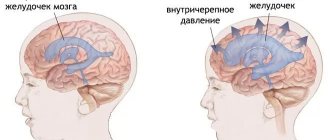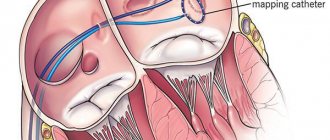- Published by: Laima Jansons
Bleeding from the ears is not a common condition; it does not occur on its own without a reason. Any unnatural bleeding should never be ignored, and with blood from the ear the situation becomes dangerous because the organ is located in close proximity to the brain . Blood may be released in small quantities, accompanied by pus, have an unpleasant odor, or flow out in a trickle, depending on the cause of the bleeding.
Photo 1. Bleeding from the ear is a very dangerous symptom. Source: Flickr (miserablespice)
Causes of bleeding from the ear
Bleeding from the ear or otorrhagia indicates damage to the blood vessels in the hearing organ . It can occur for various reasons:
- infectious diseases;
- hearing injury;
- barotrauma;
- benign formations;
- malignant formations.
Note! Bleeding from the ear always indicates damage to the capillaries inside this organ.
Infectious diseases can cause bleeding from the ear , as they lead to damage to the eardrum, these include:
- otitis;
- myringitis;
- perichondritis;
- furunculosis.
The structure of the hearing organ is designed in such a way as to prevent the penetration of various bacteria, but under certain conditions or diseases the ears become vulnerable to infections.
Otitis
Otitis almost always occurs against the background of decreased immunity . This disease can be caused by a virus, bacteria, fungus, or it can also be of an allergic nature.
Purulent form of otitis
Pus accumulated in the ear begins to put pressure on the eardrum , and when it is perforated, it is released along with blood.
Purulent chronic otitis is divided into two types: epitympanitis and mesotympanitis; with mesotympanitis, pus with odorless blood is released, and this type is often treated conservatively. Both of these types are the result of untreated acute otitis media.
Note! In some cases, the doctor makes an incision in the membrane in the ear to allow the exudate to come out.
Bullous otitis is characterized by the appearance of rashes - blisters that contain clear or bloody fluid. Having burst, such a bubble releases its contents out. The disease is caused by influenza viruses, herpes, adenovirus and some others.
Myringitis
Myringitis is an inflammation of the eardrum that occurs due to:
- water getting into the ear canal;
- pneumonia;
- untreated otitis media;
- viral infection;
- mechanical, traumatic damage.
Blood vessels are destroyed under the influence of these causes, and bleeding from the ear occurs.
Furunculosis
Furunculosis is a disease that affects the hair follicles in the ear canal under the influence of staphylococci and streptococci . These microbes live on the skin and do not cause harm until the right opportunity presents itself. With decreased immunity, chronic otitis media or ear injury, bacteria penetrate deep into the ear canal and form boils there. At the time of opening, these formations release the contents (purulent-bloody exudate) out.
Other reasons
Another disease that causes bleeding from the ears is candidiasis or mycosis . This pathology is accompanied by itching in the ears, but blood appears in a very advanced condition if left untreated.
Inflammation of the perichondrium or perichondritis , which occurs due to trauma to the cartilage or due to microbial damage, is uncommon, but it is a condition that may be accompanied by blood discharge from the ear.
Traumatization of the hearing organs leads to disruption of the integrity of the capillaries and bleeding. This occurs in the following cases:
- careless handling of ear cleaning devices;
- Using unsuitable objects to clean the ears, inserting them deep into the ear can cause injury;
- abuse of medications (ear drops, ointment).
Note! When there is a blow to the head area, blood flows from the ear not intensely, but continuously; it is almost impossible to stop such bleeding on your own; medical assistance is required.
During barotrauma , the eardrum is destroyed, this occurs under the influence of:
- sharply increased pressure in the arteries;
- air travel;
- chronic inflammation in the nose and throat;
- very loud sound;
- pressure surges in divers.
Benign formations and carcinomas , which affect the appearance of bleeding from the ears, can be seen without a special device. With carcinoma emerging from the epithelial cells of the ear, pressure occurs on the capillaries and their subsequent damage.
When chronic purulent otitis becomes complicated, the tissue of the ear canal may begin to grow and a polyp may appear - a formation that is easily damaged and begins to secrete blood. The polyp is firmly attached to the mucous membrane and can only be removed surgically.
The ear is swollen: what to do?
In the heat of play, during sporting events, at home or in the yard, a child can always accidentally hit the ear. In response, it will begin to swell. It is impossible to leave this condition for later, in the hope that everything will go away on its own. The cartilage may be deformed. If the anterior wall of the external auditory canal is not repositioned in time, the child’s hearing will deteriorate over time. Then, to restore the lumen, a series of plastic surgeries will be needed.
Use a sterile bandage or gauze to remove dirt from the surface and rinse your ear with warm boiled water. If there are wounds, treat their edges with an alcohol solution of iodine, and apply a bandage over it. Go to the emergency room to rule out serious pathologies.
A seemingly harmless earbud earphone poses a great danger. If a blow to the auricle occurs while listening to music, the child will receive not only swelling, but also barotrauma.
Children often receive mechanical ear injuries in wrestling sections.
First aid at home
When performing first aid, you need to tilt your head yourself so that the blood flows out without obstruction .
It is important! Under no circumstances should you cover your ear with a cotton swab or napkin. If the bleeding does not stop for a long time, then you should apply a swab to your ear and call a doctor immediately.
After the bleeding has stopped, it is necessary to treat the ear with chlorhexidine or any other antiseptic solution.
A cold compress can help stop bleeding.
If a foreign body gets into the ear canal, you should not try to remove it yourself, even if this causes blood to leak out, otherwise the situation may worsen.
If there are no visible reasons why blood may be flowing from the ear, then urgent consultation with a specialist . The doctor, examining the hearing organ and relying on laboratory tests, will make the correct diagnosis and prescribe the optimal treatment.
Photo 2. If there is bleeding, you should seek emergency help. Source: Flickr (theofficeofdesign).
Possible complications
Complications in such cases refer to those diseases or conditions that cause bleeding from the ears. Thus, damage to the tympanic membrane due to injury leads to:
- bleeding from the ear;
- to hearing impairment or partial loss;
- tinnitus and acute pain;
- to the possibility of penetration by foreign bacteria, thereby causing infectious diseases.
Note! Otitis, accompanied by bloody and purulent discharge, can provoke inflammation of the facial nerve.
A complication of purulent otitis is that the exudate not only comes out, but can also penetrate into the cavity of the inner ear. Then an even more serious disease will arise - meningitis , and this is already fraught with the most dangerous consequences, even death.
Both forms of chronic purulent otitis epitympanitis and mesotympanitis, despite the fact that they can be treated, lead to hearing loss in an advanced state and it will not recover.
How to stop nosebleeds during pregnancy
Sit so that it flows freely from the nasal cavity. Next, follow the instructions below.
First, close both nostrils for 15-20 seconds. If this doesn't help, try inserting a wet swab soaked in salt water or hydrogen peroxide into your nose.
Ice applied to the bridge of the nose helps a lot. You can press on your upper lip and hold your finger there for 20 seconds. During this time, the bleeding should stop. Otherwise, it is recommended to call a doctor.
Diagnosis of the problem
The doctor conducts a tactile and visual examination and, if necessary, performs an otoscopy , which will identify any damage in the ear.
If chronic purulent otitis is suspected, differential diagnosis of epitympanitis from mesotympanitis using X-rays and computed tomography . fluid samples will be taken for analysis. Thanks to research, the doctor can:
- determine the presence of inflammation in the hearing organ;
- identify the exact causative agent of the infection;
- determine the stage of the process;
- find out if there are any complications.
After making a diagnosis, the doctor will prescribe effective medications.
Prevention
To avoid ear problems, just follow simple rules:
- clean the auricle carefully and with high-quality cotton swabs (sticks made of soft plastic and too loosely wound cotton can leave scratches or a piece of cotton wool in the ear);
- protect your hearing from injuries and foreign objects;
- avoid situations where there is a risk of traumatic brain injury;
- use medications only as prescribed by a doctor;
- do not delay visiting a specialist when the first symptoms of the disease appear.
You can contact a multidisciplinary medical otolaryngologist by phone or through the feedback form.
Homeopathic treatment
For bleeding from the ears of adults and children , Mercurius vivus is prescribed; it is also indicated for shooting pains in the ear.
At the initial stage of otitis, Ferrum phosphoricum is used.
For foul-smelling discharge from the ear canal, which is accompanied by a burning sensation, Arsenicum album is used for otitis media.
When the membrane in the ear ruptures and purulent exudate is released, Calcarea sulphurica is prescribed.
If the eardrum is damaged, Kali chloratum is taken.
For chronic inflammation of the middle ear, Barita carbonica is prescribed.
Viola odorata is used to treat purulent otitis media with fluid leaking from the ear and tinnitus.
Causticum is prescribed for thick, dark red, brown discharge with a foul odor .
For the treatment of chronic otitis and bone damage, the following remedies are needed: Calcarea iodata, Calcarea fluorica, Sulfur, Silicea.
Also, in the chronic course of the disease with a thick, foul-smelling liquid discharged from the ears, Morbillinum is used for boils.
Possible forecast
If an additional bacterial infection occurs during a simple inflammation, the discharge has an unpleasant odor and turns greenish-yellow in color.
The long-term existence of such a lesion can lead to a chronic course. And this can already lead to serious hearing impairment. In almost every case, this indicates the spread of inflammation to the deeper organs of hearing, including the eardrum.
If, despite adequate conservative therapy, no improvement is observed, invasive or surgical treatment may be used.
Preventive methods
To prevent bleeding from the ear, you need to follow a few simple rules:
- promptly treat diseases of the ear, nose and throat;
- prevent chronic processes in the body;
- perform various actions aimed at increasing immunity (physical education, hardening);
- do not allow water to stagnate in the ears after a bath or swimming in ponds;
- do not use sharp objects to clean your ears;
- avoid places with very high noise levels;
- To remove wax plugs, visit an ENT doctor’s office.
To prevent injuries at work, you should protect your head and follow safety precautions.









